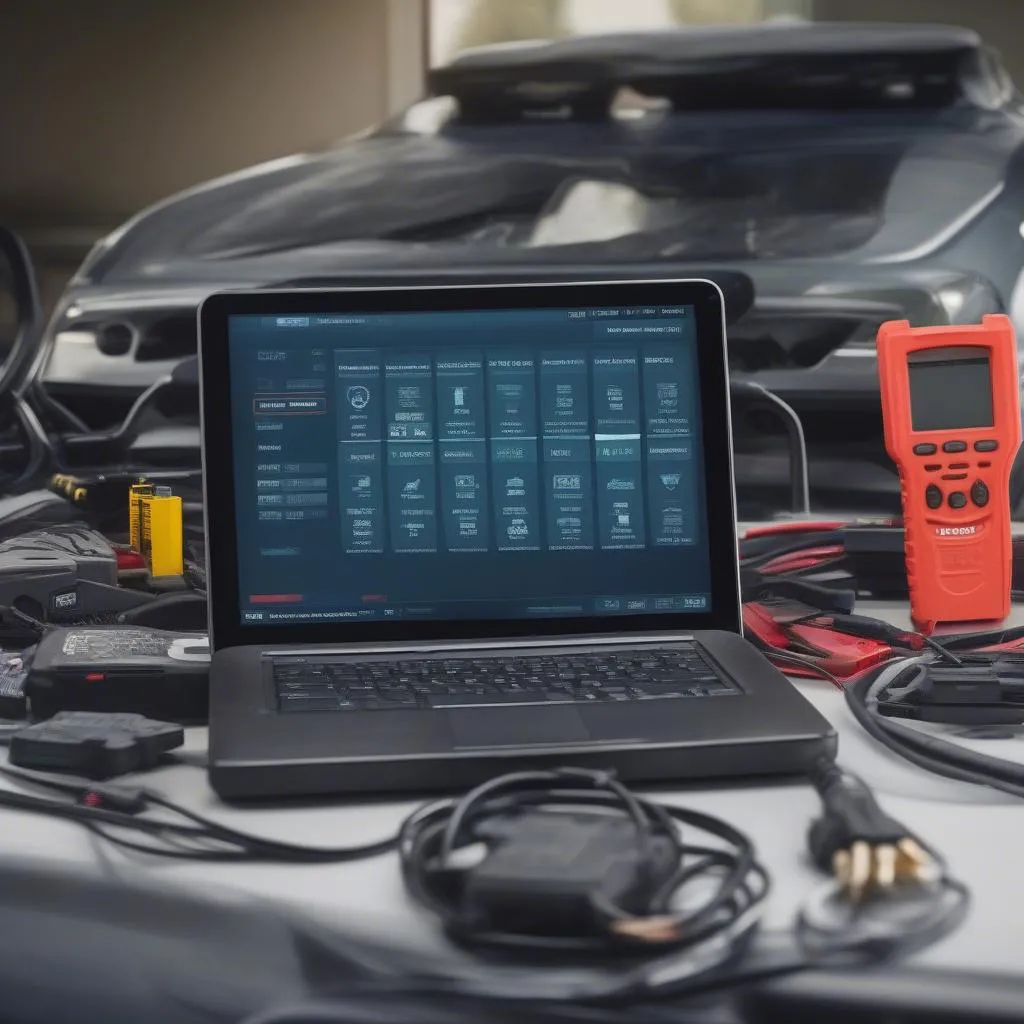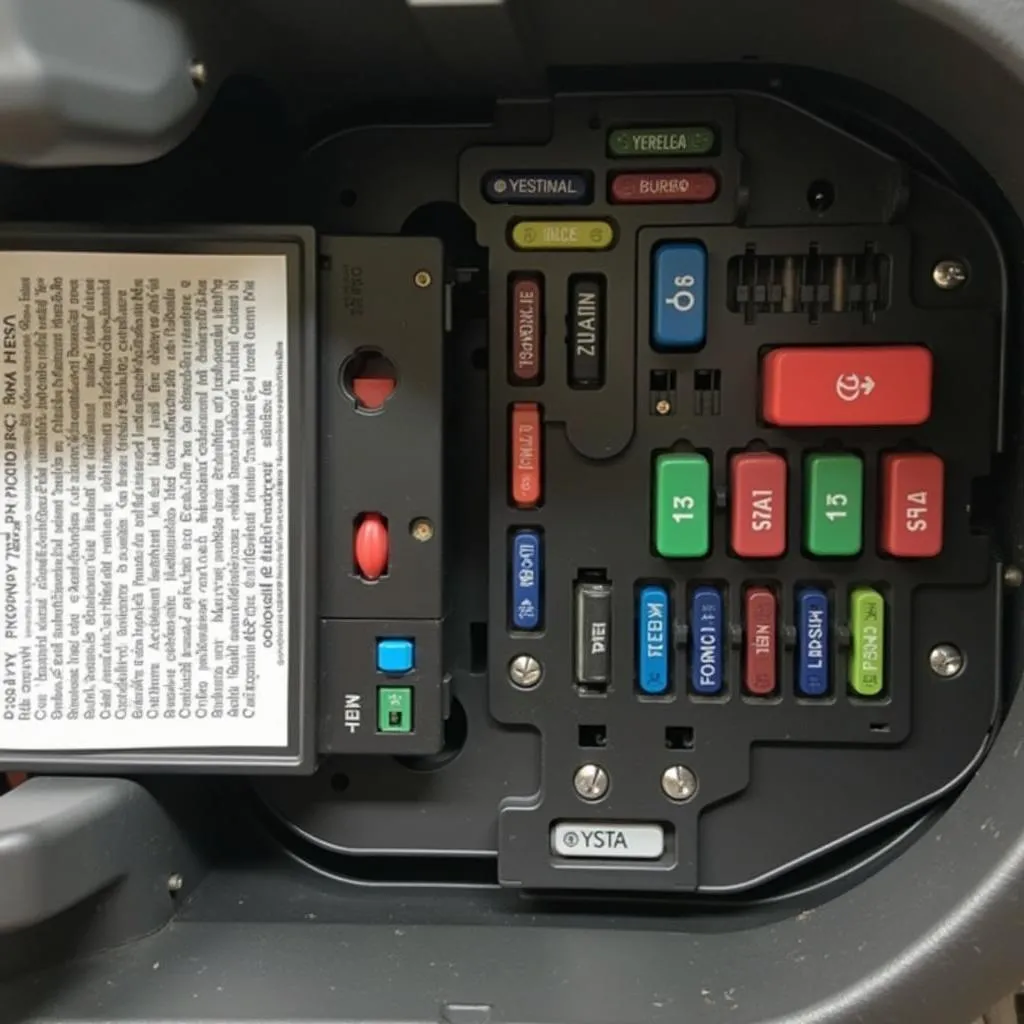If you’re staring at a “Scosche yellow tab” and wondering about its connection to your car’s anti-theft system, you’re in the right place. While Scosche is known for its electronics and car audio accessories, the yellow tab itself isn’t directly related to anti-theft technology. It’s more likely a component of a Scosche product installed in your vehicle. Let’s demystify car security and explore how modern diagnostics can help troubleshoot any issues you’re facing.
Decoding the Yellow Tab and Common Car Security Features
Before we dive into diagnostics, let’s address the “yellow tab.” It might be a part of a Scosche wiring harness, a mounting tab for a phone holder, or even a protective cover for a connector. Without more context, its exact purpose remains unclear.
However, when it comes to car security, most modern vehicles utilize:
- Immobilizers: These systems prevent the engine from starting without the presence of the correct key fob, disabling unauthorized access.
- Alarm Systems: Sensors detect forced entry or movement, triggering an audible alarm and flashing lights to deter theft.
- GPS Tracking: Some vehicles incorporate GPS tracking systems that allow owners and authorities to locate a stolen car.
Recognizing Car Security System Malfunctions
A malfunctioning car security system can be a major headache. Here’s how to identify potential issues:
- Engine Start Problems: If your car refuses to start, even with the correct key, the immobilizer system might be at fault.
- Erratic Alarm Behavior: An alarm that goes off randomly or fails to activate when it should indicates a problem.
- Key Fob Issues: Unresponsive key fobs or reduced signal range can point to battery depletion or a system malfunction.
Equipping Yourself for Automotive Diagnostics
To delve deeper into car problems, including potential security system issues, you’ll need the right tools. Diagnostic equipment has evolved significantly, moving beyond basic code readers to sophisticated software solutions.
- OBD-II Scanners: These devices connect to your vehicle’s onboard computer (ECU) through the OBD-II port, reading and displaying diagnostic trouble codes (DTCs).
- Professional-Grade Diagnostic Software: For comprehensive analysis and advanced functionality, consider software like those offered by Cardiagtech. These programs provide detailed insights into your car’s systems.
 Car Diagnostic Tools
Car Diagnostic Tools
Troubleshooting Car Security System Issues: A Step-by-Step Approach
While DIY troubleshooting is possible for some issues, complex car security systems often require professional expertise. Here’s a general approach:
-
Identify Symptoms: Note down all unusual behavior, including specific warning lights, error messages, and the circumstances surrounding the issue.
-
Consult Your Owner’s Manual: Your manual often contains valuable information about your specific car model’s security features and basic troubleshooting steps.
-
Retrieve Diagnostic Trouble Codes: Connect an OBD-II scanner or use professional-grade software to access DTCs stored in your vehicle’s ECU.
-
Research and Interpret Codes: Use online resources or a reliable automotive repair manual to understand the meaning of each retrieved DTC.
-
Perform Basic Checks: Depending on the issue, you can check fuses, wiring connections, and battery health as a preliminary troubleshooting step.
-
Seek Professional Assistance: If the problem persists or seems complex, don’t hesitate to contact a qualified automotive electrician or a specialized car repair shop.
 Mechanic Using Diagnostic Software
Mechanic Using Diagnostic Software
FAQs: Addressing Common Concerns
Q: Can I disable my car alarm temporarily?
A: Yes, most car alarms have a temporary disable option. Refer to your owner’s manual for instructions on how to disarm your specific alarm system.
Q: What does a flashing red light on my dashboard mean?
A: A flashing red light typically indicates an active security system or a potential security issue. Check your owner’s manual for the specific meaning of this light in your car model.
Q: How can I improve my car’s security?
A: “Investing in visible deterrents like steering wheel locks and aftermarket alarm systems can enhance your vehicle’s security,” suggests John Miller, a veteran automotive security expert and author of “Car Security Essentials.”
Need Expert Assistance with Car Diagnostics or Security?
Troubleshooting car issues can be complex. If you’re facing persistent problems or need expert guidance, connect with CARDIAGTECH. We offer a range of professional automotive diagnostic solutions and services to get you back on the road safely.


